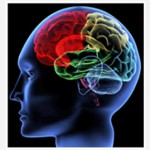Stroke Treatment/Paralysis Treatment
Stroke is an acute onset of neurological dysfunction due to an abnormality in cerebral circulation with resultant sign and symptoms that correspond to the focal area of brain.
TWO TYPES
Paralysis: It is a loss of muscle movement in the body due to motor deficits.
Paresis: It is a condition in which there is a partial weakness of muscles.
Risk factors of Stroke
| Potentially mobifiable | Not modifiable |
| Transient ischaemic attaks especially in the presence of 70-99% carotid artery stenosis | Prior stroke |
| Hypertension | Age |
| Artial fibrillation or other source of cardiac emboli | Race |
| Left ventricular hypertrophy | Gender |
| Congestive heart failure | Family history of stroke |
| Cigarette smoking | |
| Coronary artery disease | |
| Alcohol consumption | |
| Cocaine use | |
| Obesity | |
| Diabetes | |
| High serum cholesterol |
Types of Stroke/Paralysis
- Monoplegia: – only one limb is affected
- Diplegia: – affecting the same body region on both side of the bodye.g. both arms or both legs.
- Hemiplegia : – one side of the body is affected
- Paraplegia: – both legs and back is affected.
- Quadriplegia: – all four limbs and back are affected.
- Tetraplegia: – all four limbs and back are affected. Respiratory system is also involved.
Stroke Symptoms/Early Warning Sign of Stroke
- Sudden, severe headaches with no known cause
- Sudden weakness or numbness of the face, arm or leg on one side of the body
- Loss of speech, or trouble talking oar understanding speech
- Sudden dimness or loss of vision, particularly in only one eye.
- Unexplained dizziness, unsteadiness or sudden falls, especially along with any of the previous symptoms.
Stroke Physiotherapy Measures
- Changes associated with recovery are monitored.
- Tolerance to positions and activities is increased
- Upright (out of bed) and weight bearing status is improved.
- Risk of secondary impairments and recurrence of condition is reduced.
- Awareness of hemiplegic side and motor function ( motor control and motor learning)
- To regain trunk control, symmetry and balance are improved.
- Strength, power and endurance improved.
- Care is coordinated with patient, family and caregivers
- Increase in ROM exercises to prevent tightness and contractures
- Modalities to improve motor function in patients with hemiplegia